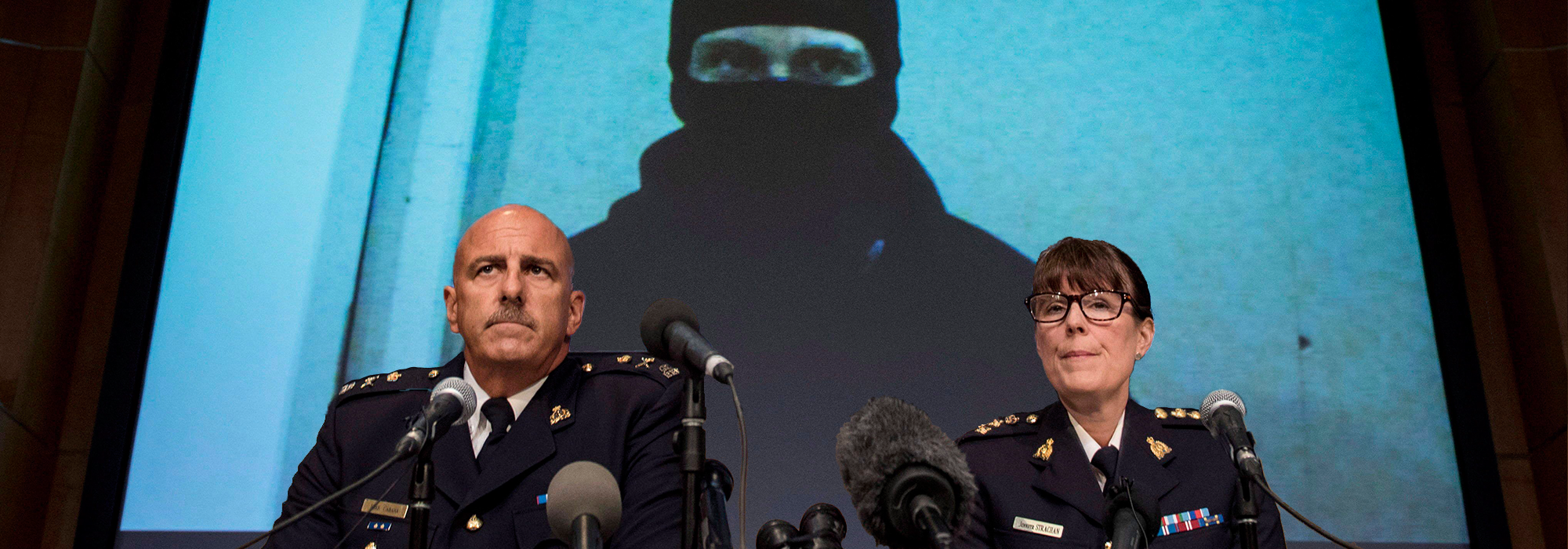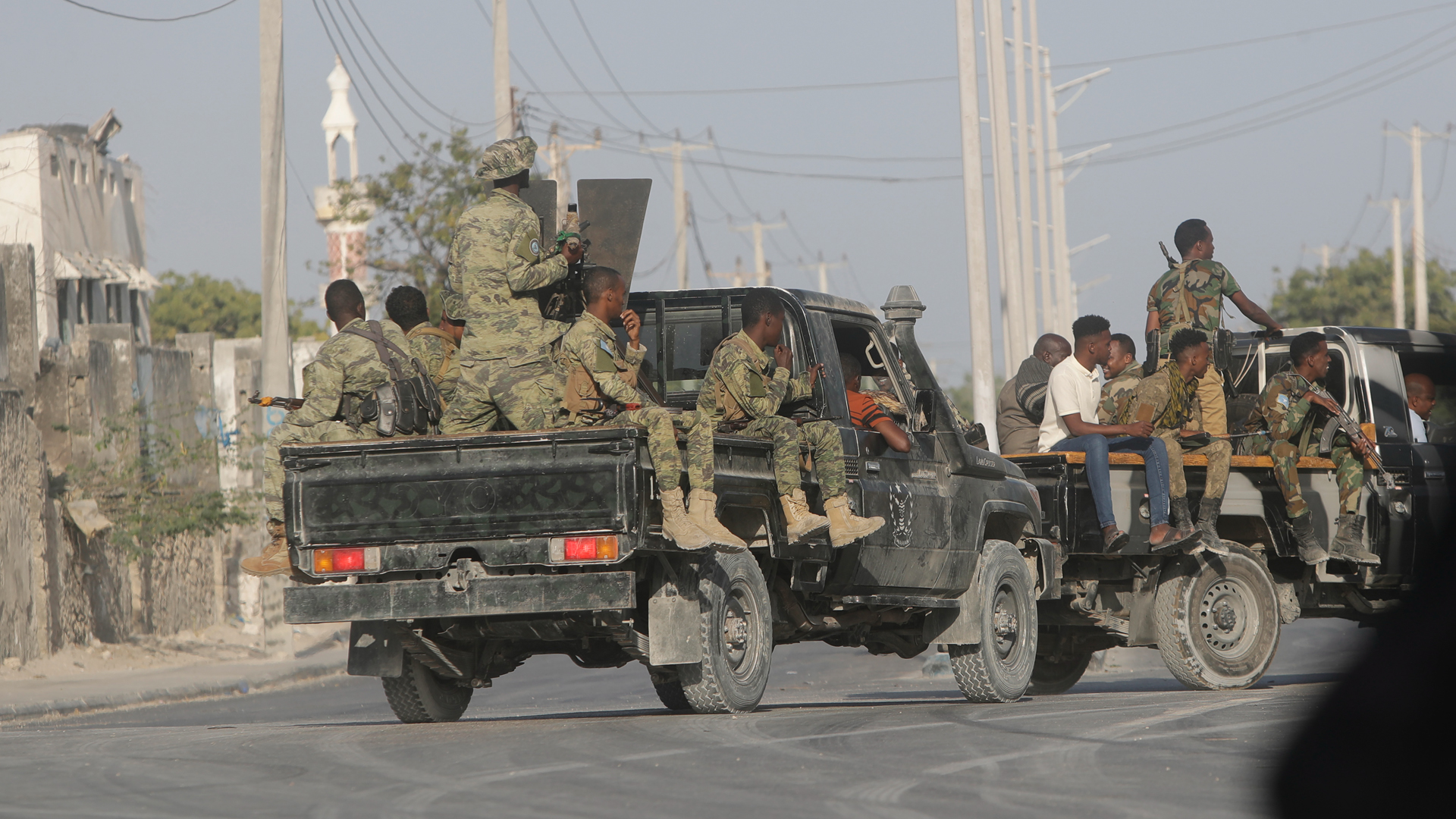
Aaron Driver wanted to be a mass murderer. Motivated by ISIS-inspired religious and political objectives, Driver was stopped by police from executing a bomb plot in southern Ontario at the 11th hour and only through use of lethal force. There is much we do not yet know, but his case reflects some of the principal challenges in modern antiterrorism. Key among these: How do you stop someone from believing that killing other people is virtuous, and then acting on that belief?
We focus here on some practical difficulties Canada faces in meeting this objective.
Belief systems and behaviour
Driver was a vocal supporter of the Islamic State, or ISIS. Since late 2014, he was very active on social media, maintaining several Twitter accounts, a Facebook page and an ask.fm page. On these platforms, he declared the Islamic State to be the legitimate caliphate, praised attacks on the West and spread official ISIS propaganda. He wholeheartedly considered himself to be an active member of ISIS in Canada and was not shy about saying so.
His views were, therefore, unpalatable. But there is an important distinction between harbouring unpalatable views and acting on them. This is the difference between radicalization and radicalization-to-violence. Only a tiny minority of people with radical views make the leap to violence. As the terrorism scholar John Horgan puts it: “The idea that radicalization causes terrorism is perhaps the greatest myth alive today in terrorism research.” This uncertainty over whether a radicalized person might act violently complicates antiterrorism initiatives.
One solution is to stop focusing on what goes on in people’s heads and to monitor instead their actual conduct. For this reason, focusing on indicators of a physical move to violence, such as scoping out targets or acquiring weapons, has become a core preoccupation of security agencies. But even if authorities had a complete set of indicators (and they don’t), monitoring the incidence of this behaviour across the population would be both highly intrusive – requiring a wholesale rethink of conventional understandings of civil liberties – and incredibly resource intensive.
Tools of mitigation
If we struggle to predict in advance when a person may move to violence, we are left to mitigate risk as best we can in those instances where a person’s conduct crosses red lines. Here, Canada now has a formidable arsenal of tools ranging from surveillance to sweeping terrorism-connected criminal offences that penalize conduct falling far short of actual violence. In between these poles are devices like passport revocations, no-fly lists and peace bonds – the restraining orders of the sort at issue in the Driver case that limit liberty but permit a person to remain in the community.
But even here, risk mitigation is a fraught undertaking. For one thing, when done in a fog of uncertainty, it may galvanize the very risk one fears. In the Driver case, a key question is whether the peace bond had the effect of uprooting the young man from the only community he knew and provoking a move to violence. His online community was a vibrant one. No matter how disagreeable its views, it provided Driver with a deep emotional and social anchor, severed entirely by the peace bond. It is unclear whether this had any real effect, but the point is the same: the precriminal interventions by law enforcement may “scare straight” some and compel others to double down. There is no way to know who will choose what.
It is also true that risk mitigation requires proportionality between the perceived risk and the constraints imposed. Action against a person may be excessive, even if he or she strays uncomfortably close to red lines. It is difficult to know, for instance, how seriously to take the mere tweeting and retweeting of questionable material, especially since thousands of other Westerners are likewise distributing pro-ISIS material.
In the wake of an incident like the Driver takedown, some people may rank proportionality low among antiterrorism objectives. There are those who would argue that the uncertainty of predicting violent conduct can be overcome by simply imposing constraints – up to and including imprisonment – on those harbouring radical views.
Disproportionality may, however, simply serve the same galvanizing function noted above. Incarceration of people who think the wrong thing may create a hothouse for a new cadre of people prepared to act on those views – a phenomenon most clearly illustrated by recent French experience. And meanwhile disproportionality would visit unacceptable hardship on false positives – persons who are wrongly tarred as dangerous. We have been down the road of disproportionality before in Canadian antiterrorism (most famously in the wake of the invocation of the War Measures Act in October 1970 and more recently in cases such as the treatment of Maher Arar). It produces victims without making us any safer.
Nor are tools of mitigation viable if used on a massive scale. Take surveillance. By the end of the last decade, the government was budgeting $59 million for two-year periods on immigration security certificates. That worked out to over $11 million per person placed on a security certificate. This included more than surveillance costs; it also included legal costs for the fraught legal contest. But even if you limit these costs to funding for the Canada Border Services Agency, the Canadian Security Intelligence Service and Immigration, Refugees and Citizenship Canada, it still amounts to $3 million per person per year in support of the security certificate.
For the sake of argument, let us assume that we impose security-certificate levels of surveillance on only 50 of the potentially several hundred people who may have ties of some sort to a terrorist group. If we assume that the agency costs noted above cover surveillance, this translates to $150 million a year. In 2016-17, the RCMP’s planned budget for all federal major criminal investigations into “serious and organized crime to reduce its impact on Canada and Canadian interests; financial crime to maintain the integrity of the Canadian economy, government and financial systems; and national security threats to support and protect Canada’s national security” is $294 million. So we are talking about adding the equivalent of half of that total budget in the form of surveillance costs alone.
Likewise, terrorism trials are expensive and lengthy in Canada – one of the reasons that they are so rare. There are certainly ways they might be simplified, although not without considerable rethinking of, among other things, the means by which intelligence collected by CSIS can be used as evidence in trials. Even then, they will be blunt and often unwieldy tools.
And, finally, there is the risk that the tools will undercalibrate risk. Surveillance is fallible. Peace bonds can be beaten. No-fly lists protect aviation but not ground transport. Once a person makes the move to violence, the space in which to sow mayhem expands and the security agencies find themselves in a race against time, as was the case in the Driver matter. And even this assumes the authorities know something of the person’s intent. If Driver had not prepared the video in which he gives bay’a (an oath of allegiance) to Abu Bakr al-Baghdadi, authorities would have been oblivious to his plans.
Tools of preemption
Communities and government, faced with these difficulties, have explored a variety of ways to supplement these mitigation tools. “Countering violent extremism” (CVE) programs are a growth industry for both good reasons (the imperfections of other solutions) and bad (there is money in it as states around the world grapple with similar problems). Some CVE is junk science and some programs, like the United Kingdom’s Prevent, have been controversial; Prevent has drawn condemnation from critics for its breadth (which includes a focus on “British values” and not just violence per se) and also for producing unsettling misunderstandings that tar people with terrorist associations.
This underscores the challenge of CVE programs: at minimum, they must build robust linkages with affected communities – and especially the Muslim communities, given current preoccupations with ISIS-inspired terrorism. A CVE program that wraps too many people with no inclination to violence into its embrace – or is a stalking horse for overzealous law enforcement and intelligence activities – may breed alienation that fuels the very ideology that the programs must contest.
Ruptured relations with civil society can be counterproductive when law enforcement intervention is required – some data suggest that in 80 percent of instances, people making the move to violence signal their intent to persons around them. As Peter Bergen writes, “Community outreach to Muslim communities to enlist their help in detecting those who may be becoming militant is the most fruitful approach to dealing with the scourge of terrorism.” This is only possible where both security practices and CVE programs generate trust between communities and authorities.
Moreover, as J.M. Berger has argued, there is an important case to be made for separating the V (violence) from the E (extremism) in CVE initiatives. At the very least, there should be a public conversation about whether we want to prevent violence or whether we want to target everyone who holds beliefs we find deplorable. For Berger, the focus of CVE should be disengagement from violence, because it is in a sense a realistic, achievable and measurable goal.
Most scholars of terrorism agree that individuals who “believe things” are different from individuals who “do things.” Some who believe will act and, indeed, some who act don’t really believe. The Aaron Driver case is important, and fundamentally frustrating, because his was a typical case where disengagement from a violent trajectory had been achieved. Or so we thought.
Yes, he believed all kinds of things about ISIS, but he had believed those things for a long time. Skeptics will hold that he had everyone fooled, that he was planning and plotting all along. Others will argue that at some point during the last few months there was a turning point. He had become “engaged” again. The challenge going forward, as it has always been, is to understand these turning points, notice their effects and try to intervene in time.
Photo: Justin Tang/The Canadian Press
Do you have something to say about the article you just read? Be part of the Policy Options discussion, and send in your own submission. Here is a link on how to do it. | Souhaitez-vous réagir à cet article ? Joignez-vous aux débats d’Options politiques et soumettez-nous votre texte en suivant ces directives.







